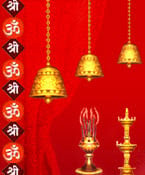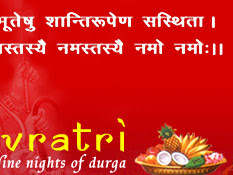
World Heart Day is celebrated annually on the last Sunday of September, and encourages healthy heart awareness. It is being celebrated on 29th September this year, with the theme 'Team Up for Healthy Hearts'. It works on the idea that getting together and teaming up can be great way for promoting heart health. As individuals, all of us strive to maintain our health and wellness. But only few know that by teaming up and working together, this can happen better and also a great deal faster. This year's campaign underlines the role of families and communities in helping individuals reduce the risk of heart attack and ensure a sound heart health. This can happen at a variety of levels: be it your family, school, workplace or even your neighbourhood. So, instead of doing it alone, team up to eat right and exercise.
How to team up for a healthy heart?
A healthy heart is vital for healthy living, regardless of one's age or gender. One can prevent major cardiovascular risks, like heart attacks and strokes by choosing a healthy diet, being physically active and not smoking. This year's campaign focuses on the need to team up and work together for a healthy heart. If there is no such existing group, try to identify others around you who also have an interest in cardiovascular health and disease prevention and start your own!
Mantra for a healthy heart:
Exercise:
Physical inactivity is a significant contributor to the ageing of heart, as it can lead to excess weight gain and obesity, diabetes and hypertension. Regular exercise helps in:
- Slow down the narrowing of arteries to the heart and brain
- Encourage the body to use up excess stored fat, so it is crucial in helping weight loss and fighting obesity
- Improve cholesterol levels by increasing the level of good cholesterol (HDL or high density lipoprotein cholesterol) in the blood
- Maintain normal blood glucose levels in order to manage diabetes
- Reduce high blood pressure
- Smokers to quit - smokers who exercise are twice as successful in their attempts to stop smoking
Being active also improves the overall health, gives more energy, reduces stress, builds stronger bones and muscles, and improves balance, strength and mobility.
Eat right:
To help maintain a young heart for life, calories consumed must be balanced with calories burned. It is therefore recommended to combine exercise with a balanced diet including plenty of fruits and vegetables, whole grain products, lean meat, fish and pulses, as well as low-fat and fat-free products, unsaturated soft margarines and oils such as sunflower, corn, rape-seed and olive oil.
No smoking:
Smoking, or any use of tobacco, is another important risk factor of heart disease. Quitting using tobacco lowers blood cholesterol and low-density lipoprotein "LDL" cholesterol (bad cholesterol) levels, reduces blood clotting and the chance of a sudden blockage of an artery. Setting a good example by not using tobacco gives a clear, consistent message about the dangers of tobacco to children.
'Go Red' for Women
In 2005, roughly half of the 17.5 million victims of heart disease and stroke - the world's biggest killer - were women. This year there is a special Go Red for Women international campaign, which aims to reduce cardiovascular disease in women through improved prevention, early diagnosis and treatment. The number of deaths and disability from heart disease and stroke in women can be reduced by: saying no to tobacco, eating healthy and doing more exercise.
Women and children
It is a myth that heart disease and stroke only affect older, male, rich populations. CVDs affect as many women as men however their risk is seriously underestimated.
To mark World Heart Day 2015, the World Heart Federation and its members urge you to take action to save the lives of the women and children you love.
Our new infographic reveals the global CVD burden and highlights actions that can be taken to protect the heart health of women and children.
In fact, heart disease is actually the number one killer of women, causing 1 in 3 female deaths: shockingly, that’s about one death per minute! It is vital that women learn the truth about their cardiovascular disease risk and take action to protect themselves and their family!
Children are vulnerable too: the risk for cardiovascular disease can begin before birth during foetal development, and increase further during childhood with exposure to unhealthy diets, lack of exercise and smoking.
Children might suffer a double burden from heart disease and stroke. They may have to face the emotional consequences of seeing a loved one becoming ill, but they are also at risk of the physical consequences of heart disease and stroke.
Modern society can expose children to risk factors such as diets with too few calories, diets high in “bad” fats and sugar; activities such as computer games that discourage physical activity; and in some countries, tobacco advertising that encourages tobacco use or environments filled with secondhand tobacco smoke.
This year we have developed a leaflet specifically targeting children aged approximately 7–10 years old, to educate them about heart-healthy behaviour.
Workplace Wellness
Your work and workplace environment has a significant impact on our physical, mental and social health. It has been seen that a number of chronic diseases impact people in their "working" years, reducing productivity and increasing costs. An unhealthy work environment is characterised by stress, depression, chronic back problems, unhealthy eating habits due to lack of time and decreased opportunity for physical activity. A healthy work environment works to:
- improve employee health
- reduce employee stress
- reduce workforce turnover
- improve employee decision-making ability
- reduce organisational conflict
- reduce absenteeism
- Forty per cent patients with heart attacks in India are less than 40 years of age.
- Regular exercise for at least 30 minutes every day, consuming 5 to 6 servings of fruits and green vegetables protect against heart attacks.
- Smoking more than 20 cigarettes per day increase the risk of heart attack by 5 times, 10 to 19 cigarettes increases the risk by 3 times.
- If you are a diabetic your chance of having a heart attack in the next 7 years is 10 times more than a non-diabetic, everything else remaining the same.
- The first few hours after sustaining a heart attack are crucial for recognition and treatment. Treating a heart attack within first 2 to 3 hours can reduce the chances of dying from 15 per cent to 3 per cent.
- The normal blood pressure at all ages is less than 120/80 mm Hg. Every 20 mm increase in systolic and 10 mm diastolic pressure beyond this level doubles the risk of a heart attack and stroke.
Chest Pain Causes
Heart Attack Causes
A heart attack is caused by coronary heart disease, or coronary artery disease. Heart disease may be caused by cholesterol buildup in the coronary arteries (atherosclerosis), blood clots, or spasm of the vessels that supply blood to the heart.
Risk factors for a heart attack are:
-
diabetes
smoking
high cholesterol
family history of heart attacks at ages younger than 60 years, one or more previous heart attacks, male gender
-
Postmenopausal women are at higher risk than premenopausal women. This is thought to be due to loss of the protective effects of the hormone estrogen atmenopause. It was previously treated by hormone supplements (hormone replacement therapy, or HRT). However, research findings have changed our thinking on HRT; long-term HRT is no longer recommended for most women.
- Use of cocaine and similar stimulants.
Angina Causes
Angina may be caused by spasm, narrowing, or partial blockage of an artery that supplies blood to the heart.
The most common cause is coronary heart disease, in which a blood clot or buildup of fatty material inside the blood vessel (atherosclerosis) reduces blood flow but does not completely block the blood vessel.
- Angina can be triggered by exercise or physical exertion, by emotional stress, or by certain heart rhythm disorders (arrhythmias) that cause the heart to beat very fast.
Aortic Dissection Causes
Pulmonary Embolism Causes
sedentary lifestyle,
obesity,
prolonged immobility,
-
pregnancy,
cancer,
history or family history of blood clots,
irregular heartbeat (arrhythmias),
heart attack, or
- congestive heart failure.
Women who use birth control pills and smoke cigarettes are at higher risk than women who have only one or neither of these risk factors (especially over the age of 35).
Spontaneous Pneumothorax Causes
Spontaneous pneumothorax (collapsed lung) occurs when the pressure balance between the sac that contains the lung and the outside atmosphere is disrupted.
Injury to the chest that pierces through to the lung sac is the most common cause of this condition.
This can be caused by trauma, as in a car wreck, bad fall, gunshot wound or stabbing, or in surgery.
Some very thin and tall people may suffer a spontaneous pneumothorax due to stretched lung tissues and abnormal air sacs in the upper portions of their lungs. It is possible for these abnormal air sacs to rupture with even a sneeze or excessive coughing.
- Other risk factors for pneumothorax include AIDS-related pneumonia, emphysema, severe asthma, cystic fibrosis, cancer, and marijuana and crack cocaine use
Perforated Viscus Causes
Perforated viscus may be caused by direct or indirect injury. Irritation to the diaphragm in this case comes from below the chest. The diaphragm is the muscle that allows us to breathe. It is located up under the ribs and separates the chest and abdominal cavity. Any irritation to the diaphragm, even from below it, can cause pain to be felt in the chest.
Risk factors not related to trauma are:
untreated ulcers,
prolonged or forceful vomiting,
swallowing a foreign body,
cancer,
-
-
-
-
- AIDS.
Pericarditis Causes
Pericarditis can be caused by viral infection, bacterial infection, cancer, connective-tissue diseases, certain medications, radiation treatment, and chronic renal failure..
Pneumonia Causes
Pneumonia may be caused by viral, bacterial, or fungal infections of the lungs.
Esophagus Related Causes
Chest pain originating from the esophagus may have several causes.
Acid reflux (GERD) may be caused by any factors that decrease the pressure on the lower part of the esophagus, decreased movement of the esophagus, or prolonged emptying of the stomach. This condition may be brought on by:
Esophagitis may be caused by yeast, fungi, viruses, bacteria, or irritation from medications.
- Esophageal spasm is caused by excessive, intensified, or uncoordinated contractions of the smooth muscle of the esophagus. Spasm may be triggered by emotional upset or swallowing very hot or cold liquids.
September 29, 2015 marks the 15year anniversary of celebrating World Heart Day, an international campaign created in 2000 by the World Heart Federation, a non-governmental organization based in Geneva, Switzerland, to increase public awareness about the threat of heart disease and stroke.
The theme of World Heart Day 2015is “One World, One Home, One Heart.” As part of this theme, the World Heart Federation, the World Health Organization, and the American Heart Association are calling on individuals to take steps to reduce their own and their family’s risk of heart disease and stroke, such as eating a healthy diet, increasing physical activity, and not smoking.
According to the U.S. Centers for Disease Control & Prevention (CDC), cardiovascular disease causes 29 per cent of all deaths globally each year, making it the world’s number one killer.
According to the World Health Organization, “Cardiovascular diseases are the world’s largest killers, claiming 17.3 million lives a year. Risk factors for heart disease and stroke include raised blood pressure, cholesterol and glucose levels, smoking, inadequate intake of fruit and vegetables, overweight, obesity and physical inactivity.”
What Can You Do to Lower Your Risk of Heart Attack and Stroke?
As reported by the CDC, the World Heart Federation has identified four actions that you and your family can take to reduce risk of heart attack and stroke:
“1. Ban smoking from your home.
* Stop smoking tobacco in the home to improve your own and your children’s heart health.
* Implement a new rule in your home: for every cigarette someone smokes, an extra household chore is waiting!
2. Stock your home with healthy food options.
* Start the day with a piece of fruit or prepare your own lunch at home to ensure healthy options are taken to work or school.
* Make sure every evening meal contains at least two to three servings of vegetables per person.
3. Be active.
* Families should limit the amount of time spent in front of the TV to less than two hours per day.
* Organize outdoor activities for the family, such as cycling or hiking trips, or simply playing in the garden.
* When possible, instead of using the car, take your bicycle or walk from home to your destination.
4. Know your numbers.
* Visit a healthcare professional who can measure your blood pressure, cholesterol and glucose levels, together with waist-to-hip ratio and body mass index (BMI).
* Once you know your overall CVD risk, you can develop a specific plan of action to improve your heart health. Make this action plan clearly visible in your home as a reminder!”
Here is additional information provided by the CDC on steps you can take to live a healthy lifestyle that may prevent or lower your risks of heart attack or stroke:
“Engaging in healthy behaviors helps to control certain risk factors such as high blood pressure, high blood cholesterol, diabetes, obesity, and prevent heart disease and stroke,” the CDC states.
What to Do if a Family Member is Suffering a Heart Attack or Stroke?
Not all heart events are preventable. It is therefore important to know what action to take should a heart attack or stroke occur in the home.
The CDC presents the following tips and links to additional information on what to do if you suspect a family member of having a heart attack or stroke:
Seek medical help immediately
Learn More
Activities for World Heart Day
Activities organized by members and partners of the World Heart Federation include workplace campaigns, public talks, concerts, and sporting events.
The American Heart Association (AHA), encourages people to honor World Heart Day by joining in one of many Heart Walks taking place throughout the U.S. The AHA provides an interactive map on its website HeartWalk.org, to help you find and join a Heart Walk in your area.
More Information
For additional information on World Heart Day, contact the Division for Heart Disease and Stroke Prevention at cdcinfo@cdc.gov.
See also,
Follow the mentioned tips to lead a healthy and a happy life.
ALWAYS LISTEN TO YOUR FAMILY DOCTOR
|
|





































